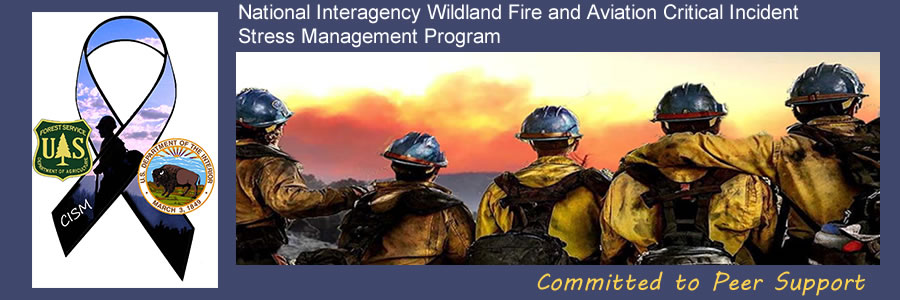
Main Print Heading
Print Subheading
The Culture of Wildland Fire
Being a wildland firefighter is the greatest job in the world
Wildland firefighting is one of the most dangerous occupations. However, firefighting is also a profession that can provide phenomenal rewards. It attracts men and women of character, courage, and commitment. With few exceptions, mainly police and military, few careers in this world can compare to the wildland fire service.

When you enter the world of wildland firefighting, you become a member of a culture that very few outside of firefighting can understand. Yet, this drive is so much a part of the fire service culture that firefighters willingly risk their lives to protect and save our natural resources, communities, and lives. As firefighters, the drive is deeply engrained. Read More
While doing their jobs, firefighters unavoidably experience stressful and even traumatic situations, leading to emotional and behavioral health problems, including anxiety, depression, substance abuse, post-traumatic stress-related illnesses, and suicide. Unfortunately, current approaches to addressing these problems tend to focus on assistance and treatment following traumatic events or after symptoms emerge. Other Cultural Considerations
The Seconds of Wildland Firefighting
In addition to the primary dangers of firefighting, there is a less observable secondary danger for firefighters. The long hours, breadth of needs and demands, ambiguous roles, and exposure to serious injury, loss of life, and human suffering can adversely affect even the most experienced professional. The profession's demands can be extreme, and the emotional costs to firefighters and their families can be immense. Yet, this danger is seldom acknowledged and even less frequently addressed. Read More

Secondary Danger
The fear of seeking services from mental health professionals "who don't understand" leaves the door open for tragedy. What is worse, the fear of losing your job, identity, and perhaps family, or showing others, especially other firefighters, a perceived weakness? This question seems easy to answer for those outside of firefighting, yet firefighters know the honest answer. Weakness is a complex concept. The fear of showing weakness relates to the fear of being seen as defective, unable to take it, and not measuring up. Ultimately, it involves the fear of being rejected. It is associated with the need to appear strong, capable, and indestructible. Read More

Secondary Injury
The psychological injury that results from how an individual was treated following a critical incident (intimidating investigations and interviews, threat of disciplinary action or removal, no or poorly executed crisis intervention). In recent years, some wildland fire agencies have recognized the need to develop strategies to attend to the psychological needs of those involved in an incident while maintaining the integrity of the investigative process. In addition, agencies need to recognize the potential to cause harm through poorly executed crisis intervention tactics, including CISM and have established policies requiring proper certification, experience, and integrity of CISM personnel.
Acceptance Across Generations
Historic approaches were not all inadequate. One of the key success factors in the Bureau of Indian Affairs Critical Incident Stress Management Program was recognizing that attitudes and practices that were once strong features in the wildland firefighting culture can still help in dealing with the stress of the profession. The fact that more and more requests for Critical Incident Peer Support services are being received and responded to indicates that the concept has reached the threshold of acceptance.

Behavioral Health in the Wildland Fire Culture
Behavioral health is a complex subject to tackle in a culture that frequently brushes aside how we feel. Yet behavioral health issues are just as serious as physical and safety issues and can be deadly if left unaddressed. Behavioral health can cover a broad spectrum of health issues for firefighters and emergency responders. These can include stress, anxiety, sleep problems, depression, post-traumatic stress disorder, and drug or alcohol addiction, to name a few. Read More

In memory of Erik the Blak
History of Critical Incident Stress Management
The history of critical incident stress management lies in military operations. The first mention of it was during the Civil War. Soldiers suffering so-called Combat Stress were considered to be in league with the enemy and were ridiculed, imprisoned, or even shot. Only during World War 1 was Combat Stress recognized as a human reaction to the horrors of war, and intervention techniques were developed to overcome the phenomenon. Today we speak of Critical Incident Stress when describing our response to a shocking event. Read More
Additional Information
International Critical Incident Stress Foundation
National Alliance on Mental Illness
American Telepsychology Association
 » Read More
» Read More
Agency CISM Information
- Bureau of Indian Affairs
- Bureau of Land Management
- U.S. Fish and Wildlife Service
- U.S. Forest Service
- National Park Service
- Southwest Geographic Area
- State Agencies

